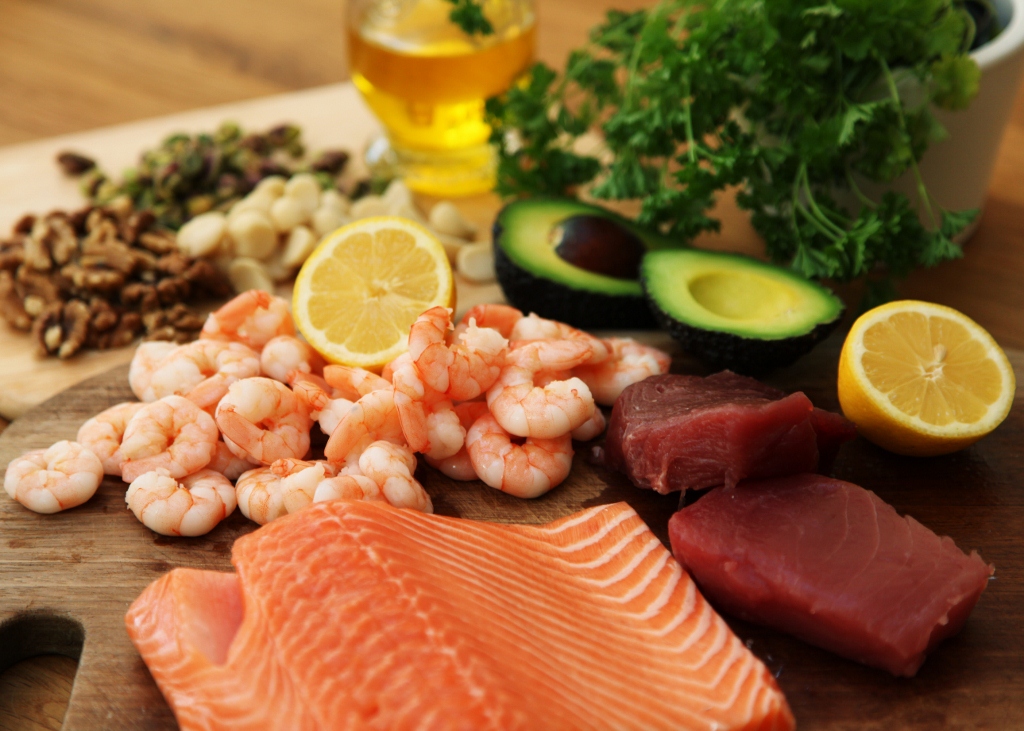Are you feeling completely confused about fat? Trust me when I say that you’re not alone. For over the last four decades, fat, especially the saturated stuff, has been demonized as the number one risk factor for heart disease. But today, better science shows us that this hypothesis has been very misleading and, in fact, sugar and highly processed carbs have been the true culprits, not fat.
Two major reviews done on saturated fat, one published in the American Journal of Clinical Nutrition and the other in the British Journal of Medicine, found there was no correlation between saturated fat and heart disease. They both emphasize that fat is not the cause of obesity or heart disease. Researchers have found that while it’s true that lowering saturated fat in the diet may lower total cholesterol, it’s actually lowering the good type of cholesterol, not the dangerous type. (1, 2, 3)
Evidence points to the fact that when people eat less fat, they tend to eat more starches, processed carbs, and sugar instead, which actually increases their levels of dangerous heart-attack-causing cholesterol. In fact, studies show that 75 percent of people who end up having a heart attack actually have normal overall cholesterol levels but are either pre-diabetic or have type II diabetes. Again, this further reinforces the fact that diets higher in sugar and processed carbs coincide with heart disease, not diets high in fat. (4)
Fat, as most of us know, is the stuff that sits directly under our skin making us look big and fluffy. Therefore, it seems quite logical that most would think that by eating fat it would cause us to become fat. However, it’s a little more complex than that, and it depends entirely on the context. For instance, diets high in fat and carbohydrates can make us fat, but it’s not because of the fat. You see, hormonally, fat has virtually no effect on insulin production, which happens to be our body’s main energy storing hormone, as well as our body’s fat storage regulator. Therefore, eating fat has little ability to cause us to become fat.
Numerous studies firmly show that diets high in fat but low in carbohydrates consistently lead to more weight loss than low fat diets, even when the low fat groups are on a restricted calorie intake. (5, 6, 7)
It is also proven that low carb, high fat diets lead to an increase in HDL cholesterol (the good cholesterol), lower triglycerides, lower blood sugar and insulin levels, create more abdominal fat loss (known as visceral fat) and lower the level of the small, dense LDL particles (known as pattern B) which is associated with heart disease. (8, 9, 10)
Despite all of the evidence, many nutrition and health advisors still struggle with this proven concept. Their claim is that low carb diets, in general, are unhealthy and potentially dangerous. Meanwhile, they continue to push the outdated low fat diet that has been proven to be completely ineffective for decades.
The fact is that we all need to consume fat every day to support our normal body functions. But, while some types of fats support our health, others can be quite damaging. So by separating the various types of fat in our diet, it can help to clear up some of the misconceptions and paint a clearer picture.
Fat Types
All fats are either saturated or unsaturated, and while most foods that contain fat have both types, they usually contain a higher percentage of one kind. Fats give our body another form of fuel and have over two times the energy density as protein or carbohydrates. At 9 calories per gram, it’s a very efficient energy source for the body. In fact, saturated fats (SFA) and monounsaturated fats (MUFA) are the body’s preferred fuel choice in metabolically healthy people.
In addition to fats being a great energy source, they also help in the absorption of our fat soluble vitamins A, D, E, and K and help maintain our core body temperature.
So, as you can see, fat is an essential part of our diet; but much like carbohydrates, most people lump all fats into one single category. This unfair judgment and narrow bias about fat may be one of the main reasons why so many people are fat phobic and fearful of having fat in their diet.
Although fat is an essential part of our diet, much like carbohydrates, most people lump all fats into one single category.
There are four basic groups of fats in our diet:
- Monounsaturated
- Polyunsaturated (Omega-3 & Omega-6)
- Saturated
- Trans
A majority of people, including some “experts,” would refer to monounsaturated fats (MUFA) and polyunsaturated fats (PUFA) as being “healthy fats.” Yet, as a species, we have consumed the unprocessed form of saturated fats (the natural occurring type) from animal products for our entire existence. So, in respect to a fat being “healthy” it may be better to define “healthy fats” as being minimally processed or relatively unprocessed.
Let’s break down the different fats to find out where we can reap the highest health benefits while avoiding any hazards.
Monounsaturated Fats
Interestingly, monounsaturated fats (MUFA) seem to be the only fats that most people, even the ones in the fat phobic camp, agree on as being healthy. But, this is a highly inaccurate assumption. As you will soon see, there are others. Some that may possibly surprise, if not shock you, as to what they are, as well as the benefits they supply.
Monounsaturated fats are fats that are liquid at room temperature and turn solid when chilled. MUFAs are non-toxic to the body, even in high doses, making them extremely appealing for both cooking and eating. In fact, research shows diets high in monounsaturated fats have a host of amazing health benefits, including:
- Decreased risk for breast cancer – A study of women in Sweden found that those with diets higher in monounsaturated fats resulted in less frequent incidence of breast cancer.
- Reduced cholesterol levels – The American Heart Association recommends the consumption of MUFAs to improve your blood lipid profile.
- Lower risk for heart disease and stroke – Diets with monounsaturated fats correlate with increased heart health and fewer strokes.
- Weight loss – Studies have found that adding monounsaturated fat to one’s diet helps with weight loss.
- Decreases pain and stiffness for sufferers of rheumatoid arthritis – Diets high in MUFA’s plays a role in improving the pain and stiffness of those who already have rheumatoid arthritis.
- Reduced belly fat – A study published by the American Diabetes Association found that a diet rich in monounsaturated fat helped increase the loss of belly fat.
Besides protecting your heart, decreasing your risk for certain cancers, and helping you maintain a healthy body weight, sources of monounsaturated fat also taste great.
Common sources of monounsaturated fats can be found in things like:
- olive oil
- macadamia nuts & macadamia oil
- avocados & avocado oil
- almonds, cashews & pecans
- lard
- beef
Bottom Line – You can eat and use these types of fats freely. The one exception you’ll need to understand is that certain foods that are high in monounsaturated fats, like avocados and nuts, can also contain a significant amount of omega-6 polyunsaturated fats. I will outline this in a little more detail next under polyunsaturated fats.
Polyunsaturated Fats
Polyunsaturated fats (PUFA) can basically be subdivided into two categories – Omega 6’s and Omega 3’s. Although both of these polyunsaturated fats are essential to our bodies we need to understand their relationship and the balancing act required in order to keep them from becoming toxic.
First, these fatty acids are termed “essential” because they are needed by the body for important function, but cannot be manufactured internally, so they must be taken in through our diet.
However, Omega-6’s and Omega-3’s have very different roles. Omega-6 fatty acids are highly pro-inflammatory which is required for proper body healing. Omega-3 fatty acids, on the other hand, are highly anti-inflammatory which keeps unnecessary inflammation in check. While both are necessary for optimal health and healing, they must be consumed in the proper ratios in order for our bodies to receive their benefits.
Today, due to our highly industrialized Western diet and the advent of processed vegetable and seed oils, the average ratio between omega-6 to omega-3 intake is estimated to be 15:1 or higher, which is far greater than the optimum ratio of 4:1 or lower.
This severe imbalance can cause a large inflammatory response leading to a number of chronic health issues including, but not limited to: heart disease, metabolic syndrome, type II diabetes, arthritis, Alzheimer’s, autoimmune disease, cancer, and more. Therefore, it’s important that we try to maintain a more proper balanced ratio.
So What Can We Do to Help Offset This Highly Imbalanced Ratio?
1. Consume More Omegas-3’s
The first step toward achieving an optimum fatty acid ratio is, of course, to consume more whole foods that are rich in the beneficial omega-3 fatty acids in which most of us are deficient. However, this is not as simple as it sounds.
First, as we discussed earlier, many foods that are rich in omega-3’s also contain much higher amounts of omega-6’s, and will thus actually contribute toward a further imbalance.
Second, the preformed, long-chain omega-3 fatty acids found in animal products – eicosapentaenoic acid (EPA) and docosahexaenoic acid (DHA) – are much more potent than the short-chain omega-3 fatty acid – alpha-linolenic acid (ALA) – found in plant foods. Indeed, our bodies need to convert ALA into the more active EPA and DHA before it can be used, but this conversion is quite inefficient. Sadly for vegetarians, this means that animal products are the best sources of omega-3 fatty acids. This is especially true of oily fish such as mackerel, salmon, tuna, and sardines, though most seafood and products from grass-fed animals such as butter, eggs, and meat also contain EPA and DHA. Fish oil supplements are an excellent choice as well. Fish oil supplementation will be discussed a little deeper along with recommendations on type, ratio and amount in this article: Supplements
The best plant-based source of omega-3 fatty acids is probably flaxseed, since flaxseed contains an acceptable omega-6 to omega-3 ratio of 5:1. However, most other seeds and their oils, such as peanuts and sesame seeds, provide much more omega-6 than omega-3, making them unsuitable for correcting an imbalance. Again, for this reason, most vegetarians will benefit from a dedicated EPA and DHA supplement.
2. Consume Fewer Omegas-6’s
The easiest way to reduce our intake of omega-6 fatty acids is to avoid consuming the processed vegetable and seed oils that are rich in it. The worst offenders in this category are sunflower oil, safflower oil, corn oil, soybean oil, and cottonseed oil.
These products have only been around for about the last century, and we are not genetically adapted to consume them. Moreover, most of them are made from crops that are usually genetically modified and/or heavily sprayed, making them even unhealthier. Coconut oil and olive oil are relatively low in omega-6 fatty acids, however, and provide countless health benefits. Finally, it’s important to source our meat from organic farms that feed their animals a grass-based diet. Studies have shown that the meat of animals that are fed grain-based diets contain fewer omega-3 fatty acids, and more omega-6 fatty acids, than their grass-fed counterparts.


